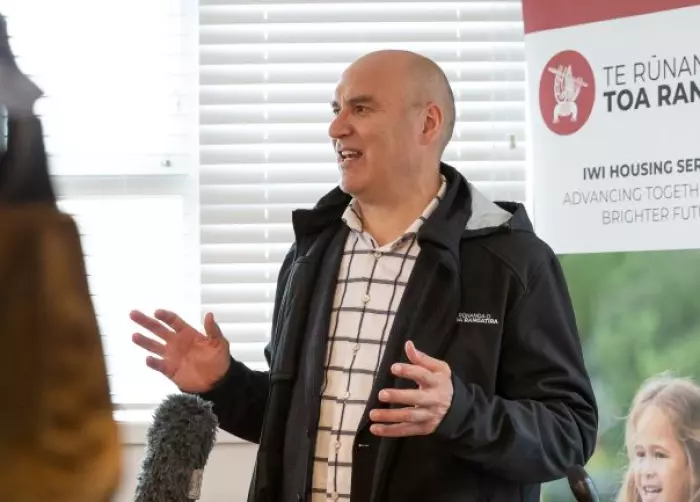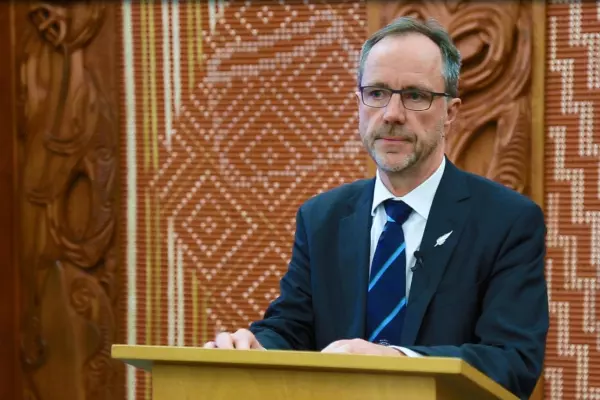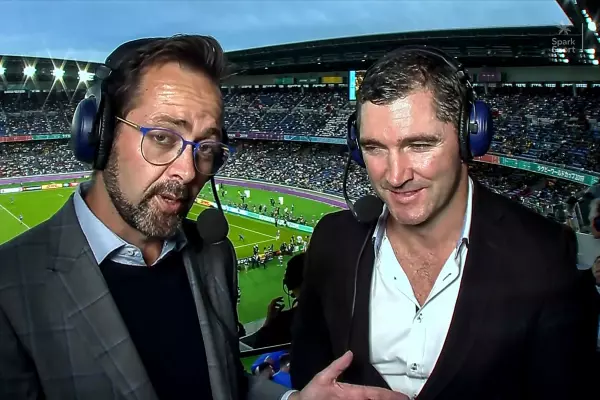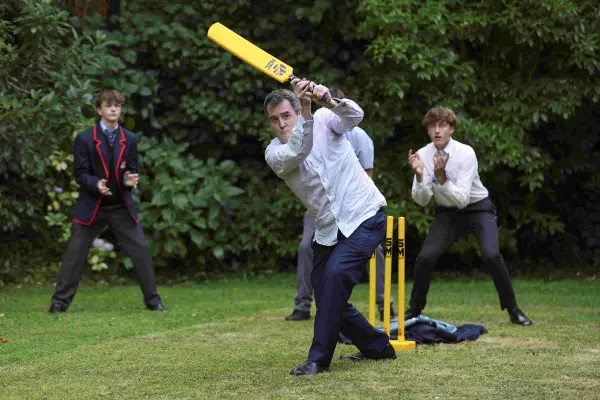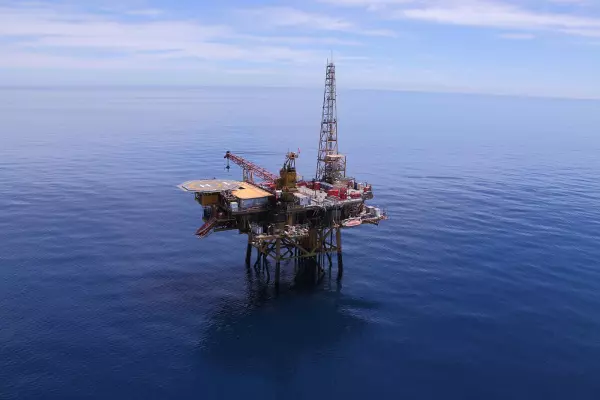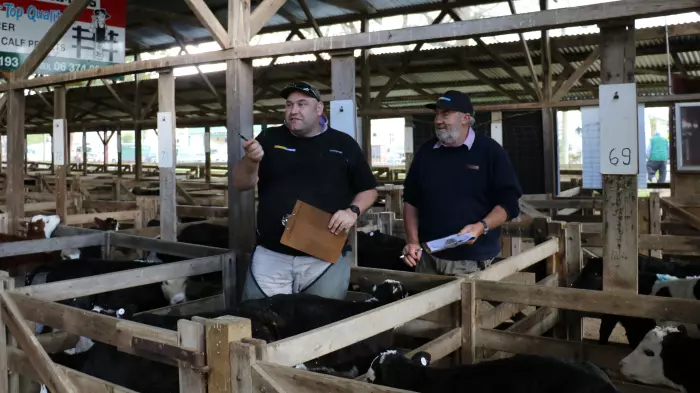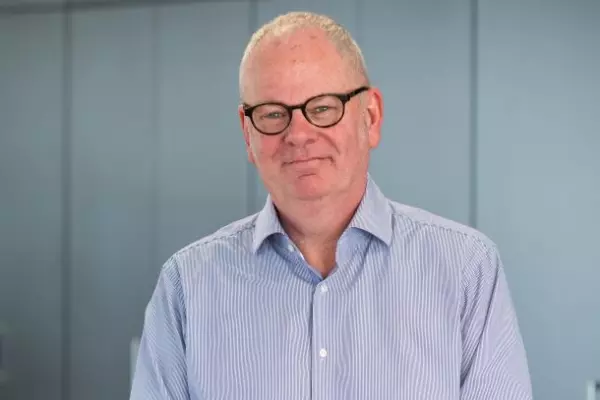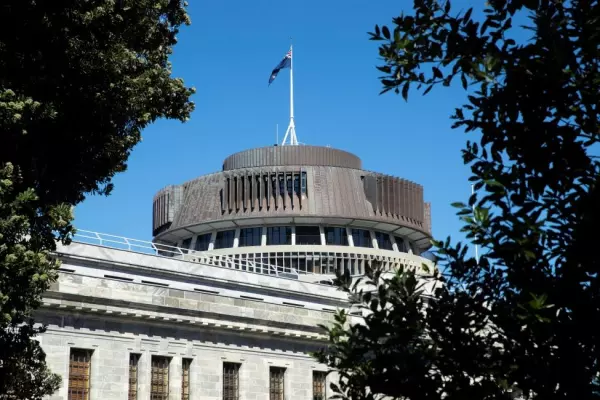It is nearly a decade since the Crown acknowledged that it breached the Treaty of Waitangi, leaving Ngāti Toa virtually landless. Now the iwi is teaming up with the Crown in one of the country’s largest urban regeneration projects. In the first of a two-part series Jem Traylen talks to Helmut Modlik, the chief executive of the iwi authority.
When Ngāti Toa’s chief executive, Helmut Modlik, or anyone from the iwi introduces themselves on a marae, the first thing they say is: “Ko Whitireia tōku maunga” – Whitireia is my mountain.
The hill with its commanding views of the Kapiti Coast is sacred to the Porirua-based iwi and is also a prime piece of real estate: “You couldn’t get more prime,” says Modlik.
It also lies at the heart of an infamous court case from the 1870s which determined how the Treaty of Waitangi would be interpreted – or, rather, cast aside and ignored – for generations to come.
Modlik says back then Ngāti Toa gifted Whitireia to the Anglican Church “with great fanfare, and gratitude and all that good stuff,” to build a school for their people.
“Well, a couple of decades rolled by, and the church hadn't done anything with it.
“So as is our custom, our leadership at the time spoke to the church and said, ‘Look, we'll have it back and we'll use it.’ But they refused.”
A tribal elder who, perhaps ironically, had been a crown minister, took the grievance to court. But tragically the case ended with the court declaring the nation’s founding document to be “a simple nullity” signed by “primitive barbarians”.
That 1877 judgement ensured Māori could not legally challenge the tenure of any land then held by settlers – a precedent that was even mentioned in the landmark 21st-century case over rights to the foreshore and seabed.
Never sell land again
Modlik may have a background in corporate finance, but he talks reverentially about the whenua and his iwi’s aspirations for owning it and housing its people and others in their community on it.
“We recognised pretty quickly that having been dispossessed progressively of our whenua in the last century and a bit, we didn't want that to happen again.
“So we made the decision as an iwi that our default is to never sell land again.”
He said it was “crystal clear” when he took up the mantle of chief executive in 2020 that housing was the top priority for his people.
A significant number of them are living in some of the largest and most dilapidated public housing estates in the country – on land taken from them under the Public Works Act in the mid-20th century.
Those public housing estates are now the focus of the largest state-led urban development project outside of Auckland.
Although announced with much fanfare by Labour in 2018, the genesis of the project began under the previous National-led government.
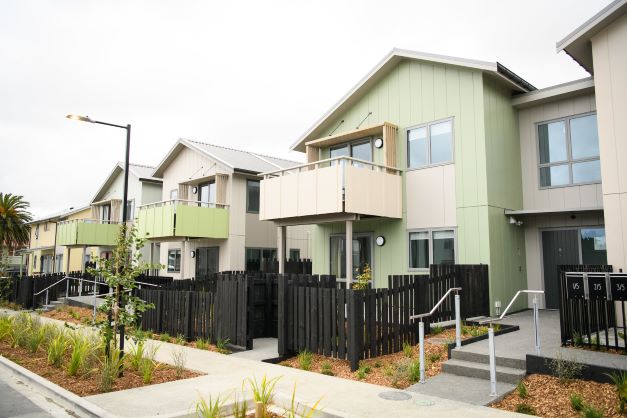
One of the first batches of new state houses being built in Porirua (Image: Kāinga Ora)
Good timing
In 2015, less than a year after Ngāti Toa had finally received its treaty settlement money, the government announced a new programme that included selling up to 8,000 state houses and the land under them.
Officials started outlining a plan to “regenerate” neighbourhoods in eastern Porirua, where Housing NZ (now Kāinga Ora) had some of its worst housing and less-desirable neighbourhoods.
Hundreds of old, rundown state houses would be replaced with many more new ones.
Some of the new houses would be kept for state-subsidised tenants, but most would be “market housing” – land and houses sold to private individuals.
But Ngāti Toa’s treaty settlement included a “right of first refusal” (RFR) on any land within its rohe (tribal boundary) that the Crown wished to dispose of.
Selling state housing land in eastern Porirua would trigger that RFR. That gave Ngāti Toa leverage to influence – or in the extreme, block – the whole plan.
Yet, surely, officials thought, Ngāti Toa didn’t want to stand in the way of improving housing in its rohe?
By late 2017, a solution was in sight: in broad terms, Ngāti Toa would take ownership of about 900 state houses and the land under them in western Porirua.
The iwi would set up a community housing provider (CHP) to manage the portfolio in the west, and its tenants would receive the same housing subsidies as before.
In exchange, Ngāti Toa would give up its RFR on 1,300 properties in eastern Porirua, allowing their redevelopment to go ahead, including private sales of houses and land.
No more asset sales
It seemed like a tremendous opportunity for the tribe, and good for its people. But before a deal could be concluded, a coalition of two parties opposed to large-scale sales of public housing was voted into government, Labour and NZ First.
On the face of it, the new government couldn't allow the sale of 900 properties to the iwi’s CHP.
“But they were open to a conversation about an alternative that got legs because they recognised the need for massive investment to upgrade the stock,” Modlik said.
The Crown and Ngāti Toa entered into fresh negotiations to find an alternative that could produce a win-win while satisfying the party manifestos.
In 2018 the talks had made enough progress for the new government to announce it was committing $1.5 billion of investment (over 25 years) to an historic urban regeneration partnership between Kāinga Ora and Ngāti Toa.

Kāinga Ora chief executive Andrew McKenzie and then Ngāti Toa chief executive Tā Matiu Rei sign the housing partnership deal in 2019 (Image: Kāinga Ora)
It took another year to hammer out the details, but a deal was finally signed in November 2019. Ngati Toa relinquished its RFRs over the houses in eastern Porirua, and benefited from three key elements:
- Ngāti Toa’s CHP would lease rather than buy the 900 state house in western Porirua. The term would be for 25 years, with the right to extend for a further 25. The CHP’s responsibilities would include upgrading the houses to the healthy home standard or replacing them with new stock.
- Ngāti Toa has the right to negotiate further intensification of the properties along similar lines to what Kāinga Ora is doing in the east. Ngāti Toa would have to fund and manage the rehousing and the rebuild, with the iwi ending up owning any new houses but not the land.
- Ngāti Toa also retains redevelopment rights over 400 sections in eastern Porirua.
Passing the torch
The partnership was the culmination of the lifework of Modlik’s predecessor, Tā (“Sir”) Matiu Rei.
“I'm the fella out on the wing, right?" Modlik explained. "All the hard work's been done by the forwards. They pass the ball out on the wing, and I've got the ball and I'm running and score the try and I look like the hero.
“But Mat did 50 years of hard graft of arguing with the Crown.”
Now the torch has been passed to the next generation of Ngāti Toa. On the other side of the table sits a Crown doing its best to move on from the paternalism which saw it seize land and build state houses, with tangata whenua relegated to being passive onlookers.
“The regeneration programme is a partnership between Kāinga Ora, Ngāti Toa and Porirua City Council. And it operates in that fashion,” Modlik told BusinessDesk.
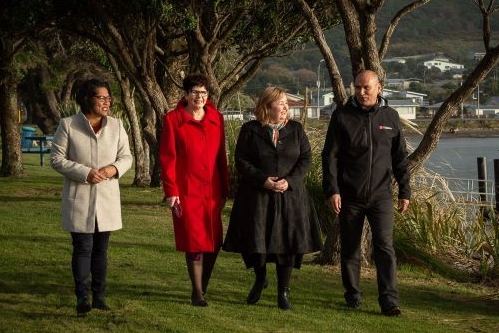
The Porirua housing regeneration is a partnership among the Crown, local government and the iwi. From left: Mana MP Barbara Edmonds, Porirua mayor Anita Baker, housing minister Megan Woods, Ngāti Toa CEO Helmut Modlik. (Image: Kāinga Ora)
For example, all three partners are represented on the board of the contracting alliance that’s doing the horizontal civil construction work. Each week Modlik meets with the programme director to discuss practical ways Ngāti Toa can support the operation.
The iwi already has some housing stock, having started to develop a block of surplus hospital land that was returned to it as part of its deed of settlement.
Row their own waka
Modlik characterises Ngāti Toa’s relationship with the Crown as “good and getting better” but, given the history, the iwi wouldn't be blamed for feeling once bitten, twice shy.
He says the strategy is to “row their own waka” and make things happen for themselves.
In practice, this means shifting some of the iwi's assets out of passive fund management and investing directly in an array of social and commercial enterprises at the heart of Porirua’s regeneration.
“In one sense, we don't care what the Crown does or what they say. We're going to make it happen… That's what rangatiratanga means: own your own space and be what you need to be.
“But in saying it and executing on that strategy, we're not ignoring for a second that there are a lot of people in agencies who've got statutory, contractual, ethical, legal and other obligations to support us pursuing our wellbeing and prosperity.
“We know that. We're just not counting on any of them doing it very well.”
He uses reverse psychology, challenging officials to prove him wrong.
Modlik adds: “One of the things I've learned is that if I want someone to be a good partner, I need to be a good partner.
“So Ngāti Toa's primary focus is on being the partner that it would want to have across the table.”
Special day
It is in that spirit that Ngāti Toa has been discussing the return of its sacred mountain.
Most of Whitireia is held by the Department of Conservation, and the iwi is happy for the public to continue to enjoy it as an undeveloped piece of land.
However, a smaller block is used by Radio New Zealand for its AM radio transmitter – a technology that is being phased out.
Modlik says they’ve reached an agreement in principle to acquire 53 hectares from the public broadcaster, and they are now discussing the technical and commercial terms of the deal.
“It's my expectation that in 18 months we'll have concluded that, and it's impossible for me to overstate what that day will mean for Ngāti Toa – when we walk back onto that maunga.”
The first thing they’re going to build there is a school.
NEXT: How the public service helped turn the iwi’s Treaty rights from a potential barrier into an opportunity.
Do you know something we should know? Email BusinessDesk's public sector investigation team: [email protected].


